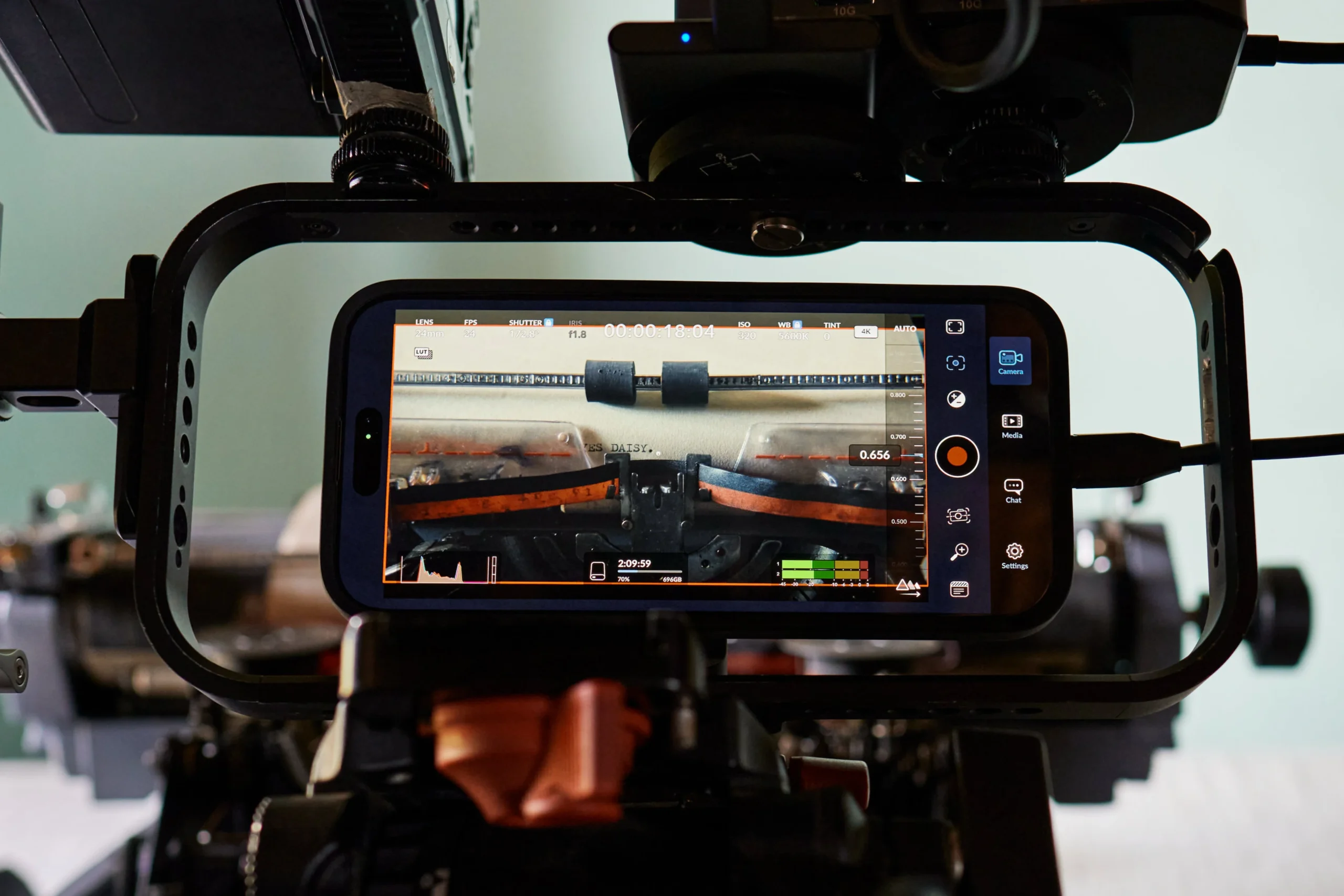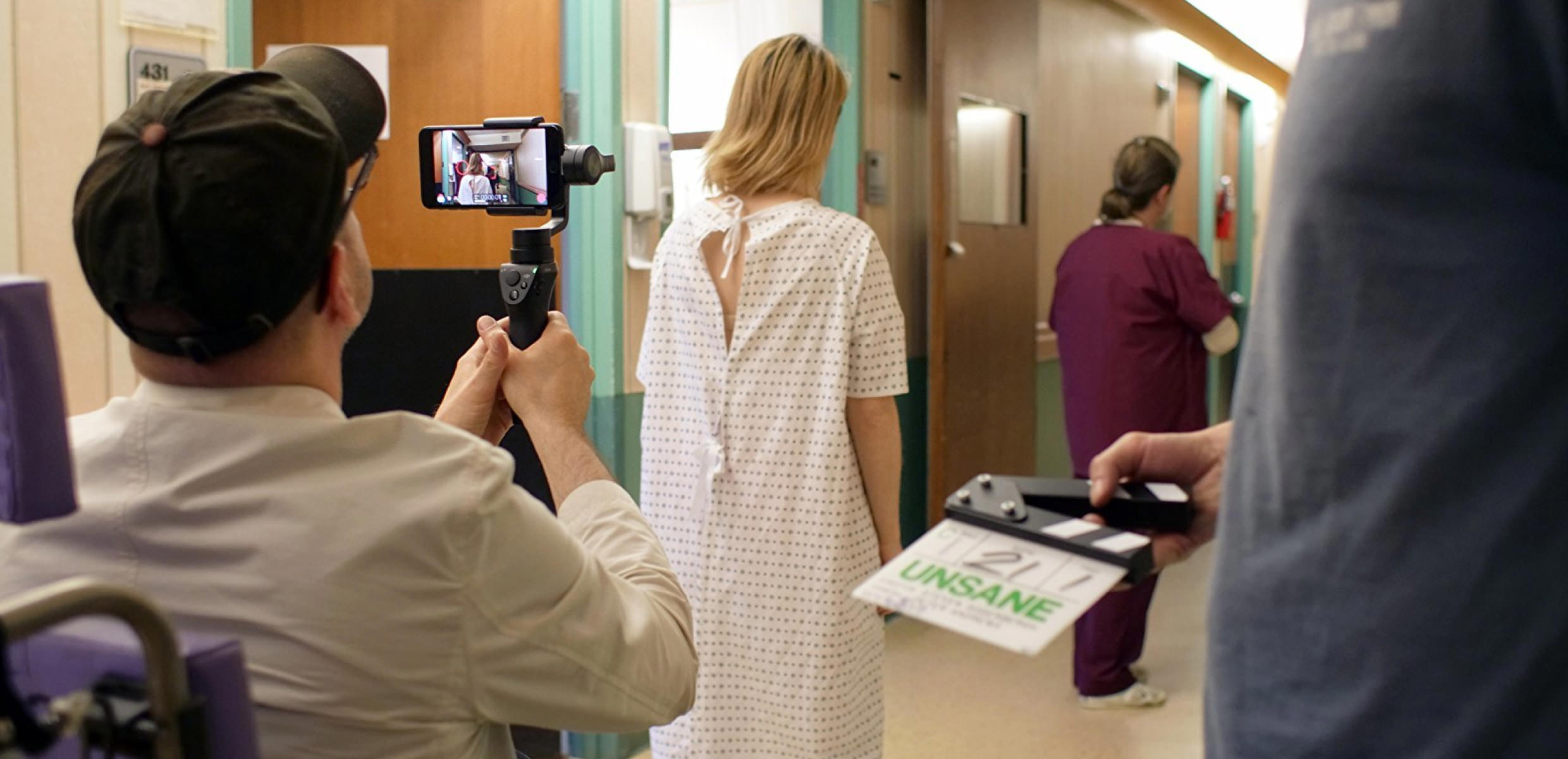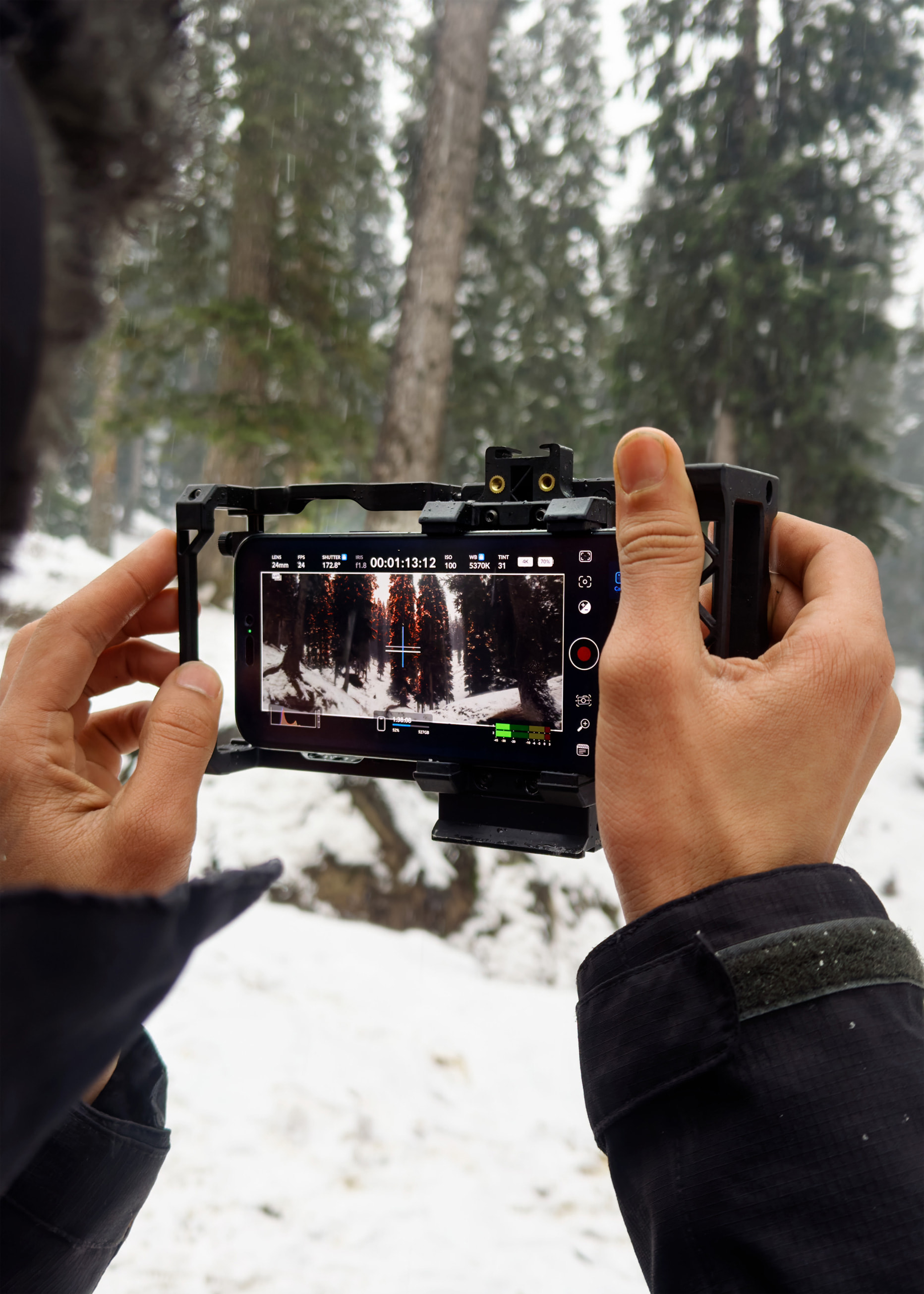
Picture this: You’re sitting in a packed theater at Sundance 2015, watching this gritty, vibrant film about transgender sex workers in Los Angeles. The cinematography is stunning, the performances raw and authentic. Then the director leans into the microphone and changes everything with one simple confession—the entire thing was shot on three iPhones. That film was “Tangerine“, and Sean Baker’s revelation sent shockwaves through the festival circuit. Nobody could quite believe what they’d just witnessed. Here was proof that great filmmaking didn’t require a million-dollar camera package or a crew of fifty. Sometimes all you needed was a smartphone and a vision. Fast-forward to today, and what seemed impossible a decade ago has become commonplace. iPhone films aren’t just accepted—they’re celebrated, distributed by major studios, and yes, they’re even making their way to the Oscars.
The Great Equalizer
Smartphones have dismantled filmmaking’s century-old barriers. For over a century, making movies was the domain of the wealthy and well-connected. You needed expensive equipment, technical expertise, and often, a lot of luck just to break into the industry. Now? A teenager in rural Kenya has access to the same basic filmmaking tools as a Hollywood director. The iPhone in your pocket shoots 4K video, has multiple lenses, and can capture footage that looks cinematic when handled properly. That kind of creative empowerment speaks volumes—and the Kenya example stands as a testament to that global shift. Wedding videographer-turned-director Nikhil Prakash, for instance, had his short film Safar, shot entirely on a mobile device, featured in global festivals across France, Russia, Istanbul, and London, where he won jury awards for Best Short Film and Best Director. The barriers that once seemed insurmountable have quietly dissolved.

When Hollywood Embraced the Revolution
Steven Soderbergh made smartphone filmmaking his mission. After decades of working with traditional cameras, this Academy Award-winning director shot both “Unsane” and “High Flying Bird” entirely on iPhones. His reasoning was refreshingly practical: why use a massive camera setup when a phone could do the job better? “Unsane” proved something crucial about iPhone filmmaking. The iPhone’s unforgiving closeness—that familiar, slightly voyeuristic feel we associate with personal videos—became the perfect lens for psychological unease. What some critics initially dismissed as a gimmick turned out to be a perfect creative choice. The slightly different depth of field, the way iPhones handle close-ups, the mobility of handheld shooting—all of it served the story. Soderbergh’s embrace of smartphone technology wasn’t just about budget constraints or novelty. He genuinely believed the tools offered creative possibilities that traditional setups couldn’t match. When a director of his caliber makes that argument, people listen.
Stories from Every Corner
The real magic of smartphone filmmaking isn’t happening in Hollywood—it’s happening everywhere else. Shorts like “Atash” by Asghar Besharati (Grand Prize, Mobile Film Festival 2021) and “Color of the Year” by Alessandra Mazzaro (Special Jury Award) prove that mobile storytelling is not just credible—it’s award-worthy. These aren’t technically inferior works trying to mimic traditional cinema; they’re often more authentic and engaging than big-budget productions. Consider the explosion of content from Nigeria’s film industry. Nollywood has always been resourceful, but smartphones have taken that creativity to another level. Filmmakers who once struggled with the expense of equipment can now focus entirely on storytelling. Films like “Hello Rain” and mobile-driven series like “Skinny Girl in Transit” have found global audiences via Netflix and YouTube. This global transformation isn’t limited to a few success stories—it’s a recurring pattern. In India’s regional film industries, smartphone filmmaking has enabled stories in local languages that never would have attracted traditional funding. In Latin America, young directors are creating festival-worthy shorts using only their phones and editing apps. The geographic boundaries of cinema are dissolving.



The Art of Limitations
Smartphone filmmaking thrives on constraints. You can’t easily change lenses mid-scene. Low-light performance has limits. Audio recording requires careful planning. Battery life becomes a real consideration. Instead of seeing these as weaknesses, smart filmmakers have turned them into strengths. The fixed focal lengths of most smartphone cameras have led to more thoughtful composition. The need for good lighting has pushed directors to become more creative with practical sources. When director Nikhil Prakash couldn’t change lenses for a nighttime alley scene in “Safar,” he lit the set using handheld DIY LED lights, which gave the moment an eerie blue glow—something more organic than any filter. Watch a well-made smartphone film, and you’ll notice something different about the visual language. There’s an intimacy there, a closeness that larger cameras often can’t achieve. Actors often lean into the lens more naturally, unburdened by bulky rigs and complex focus pulls. The result feels like you’re watching someone’s memory rather than a rehearsed performance.
Festival Circuit Recognition
Film festivals have had to reckon with smartphone cinema, whether they wanted to or not. When great films started arriving shot on phones, programmers faced a choice: stick to traditional technical standards or judge films purely on their artistic merit. Most chose artistic merit. Today, films shot on mobile devices regularly play at major festivals, often without audiences even knowing they were created this way. “High Flying Bird” premiered at Slamdance, “Atash” swept awards at the Mobile Film Festival, and TIFF’s Next Wave program included smartphone-shot shorts. Some festivals have created dedicated mobile filmmaking categories, acknowledging this as a distinct but legitimate form of cinema. The acceptance wasn’t immediate or universal. There were heated debates about technical standards, projection quality, and whether smartphone films belonged alongside traditional productions. But as the quality improved and audiences responded positively, resistance faded. Great storytelling, it turns out, transcends the tools used to capture it.
Money Talks
Studios pay attention to budgets, and smartphone filmmaking represents a massive shift in production economics. When you can make a feature film for $100,000 instead of $10 million, suddenly a lot more projects become viable. Streaming platforms, especially, have embraced this economics-driven creativity. Netflix, Amazon Prime, and Apple TV+ have all commissioned smartphone-shot content. The cost savings allow for experimental storytelling, fresh voices, and greater risk-taking. This economic democratization extends beyond just production costs. Marketing and distribution for smartphone films often rely on social media and grassroots promotion rather than expensive traditional campaigns. Some filmmakers have built entire audiences through TikTok and Instagram before their films ever reach theaters or streaming platforms.
The Skeptics Aren’t Wrong Smartphone filmmaking has legitimate limitations. Audio quality remains challenging—most phone microphones can’t match professional equipment. Low-light performance, while improving rapidly, still lags behind larger sensors. The limited lens options can be restrictive for certain types of storytelling. Projection quality is another legitimate concern. A film shot on an iPhone might look great on a phone screen or laptop, but shows weaknesses when blown up for theatrical presentation. Color grading and post-production workflows designed for smartphone footage are still evolving. These limitations are rapidly disappearing. Each new iPhone generation brings significant improvements in video quality, low-light performance, and audio capture. The ecosystem of accessories—external microphones, stabilizers, and additional lenses—continues to expand. What seemed impossible five years ago is routine today.


What’s Next?
The future of smartphone filmmaking looks increasingly sophisticated. Computational photography is already changing how phones capture images, and those advances will inevitably benefit video. 5G networks enable new workflows for editing and collaboration. Artificial intelligence is being integrated into camera apps for real-time enhancement. Virtual and augmented reality capabilities in smartphones open entirely new storytelling possibilities. Interactive films, 360-degree video, and immersive experiences that were once the domain of specialized equipment are becoming accessible to anyone with a recent smartphone. The line between smartphone and traditional filmmaking will likely continue to blur. As phone cameras become more capable and traditional cameras become more compact and accessible, the distinctions that once seemed crucial are becoming less relevant.
Beyond the Technology
The smartphone revolution in filmmaking represents something larger than just new tools—it’s about who gets to participate in visual storytelling. For too long, filmmaking was gatekept by those with access to expensive equipment and industry connections. Smartphones haven’t eliminated those advantages entirely, but they’ve significantly reduced their importance. Today, a great story told well can find an audience regardless of the equipment used to capture it. That’s created space for voices and perspectives that were previously excluded from mainstream cinema. The result is a more diverse, more interesting film landscape that better reflects the full spectrum of human experience. The intimacy inherent in smartphone filmmaking has also changed how audiences connect with content. When you watch something shot on a phone, there’s often a sense that you could make something similar. That sense of accessibility inspires engagement, motivating new creators in a way that big-budget productions rarely do.
The Revolution Continues
We’re still in the early stages of the smartphone filmmaking revolution. What seemed radical when “Tangerine” premiered at Sundance is now almost conventional. Film schools teach smartphone cinematography alongside traditional techniques. Professional filmmakers regularly choose phones over traditional cameras based on creative rather than budgetary considerations. The transformation isn’t complete, and it’s not uniform across all types of filmmaking. Big-budget spectacles will likely always require traditional equipment and massive crews. But for character-driven stories, documentaries, experimental films, and intimate dramas, smartphones have proven themselves capable of capturing cinema-quality footage. More importantly, they’ve proven that great filmmaking has always been about vision, not equipment. The smartphone revolution hasn’t just changed how films are made—it’s reminded us what filmmaking is really about: telling stories that matter, regardless of the tools used to tell them. As we look ahead, one thing seems certain: the next generation of filmmakers will grow up assuming that professional-quality filmmaking is accessible to anyone with creativity and determination. That assumption will likely produce films and filmmakers we can’t yet imagine, pushing the medium in directions that seem impossible today.
The pocket-sized revolution is far from over. It’s just getting started.